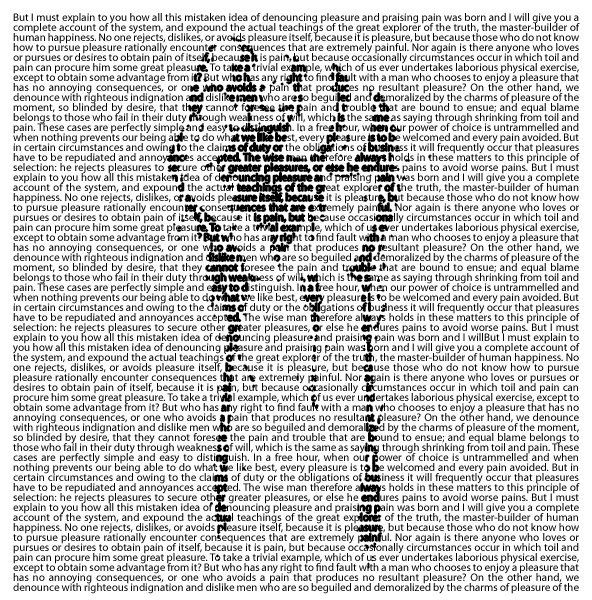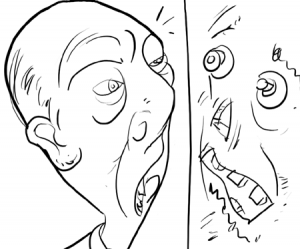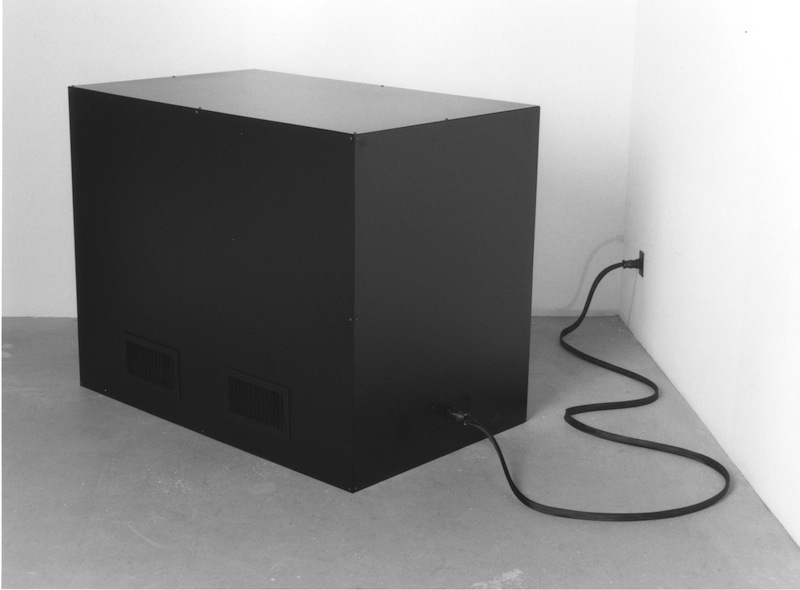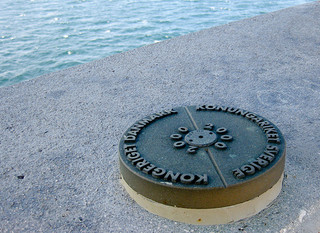Going Beyond the Textual in History
Jeremy Antley
Because of my interest in both history and games, I’m always on the look-out for good writing or new takes on how to bring elements of the gaming world into the framework of historical inquiry. Increasingly, I’m finding my best sources of this kind of reading from my Twitter stream, as was the case when Shawn Graham (@electricarchaeo) pointed me towards an article in the recent edition of the Canadian Game Studies Association journal, Loading…, titled “Beyond the ‘Historical’ Simulation: Using Theories of History to Inform Scholarly Game Design.” Tackling what they call ‘gamic action’, the authors of the paper look to use elements of ‘procedural rhetoric’ combined with ‘valid and scholarly means’ of constructing the past (modeled on the monograph or print article) to produce ‘reasonably justified truths’ compatible with current methodologies in use by many historians.[1]
I mention the article not because I found it to be a progressive example of innovative historical thinking on games, but rather the opposite. Instead of offering a means by which games can be productively and thoughtfully incorporated into historical study, the authors present a reactionary stance that seeks to bind ‘gamic action’ within the tightly defined epistemological boundaries incorporated into textual modes of history. While they do offer valid insight when it comes to analyzing the roles and pretenses games follow today with regards to claiming historical validation, the repeated insistence on bringing into alignment the modes of ‘objective’ history and playable games not only overlooks the complimentary nature of both in creating reasonably justified truths about the past (to borrow a central concern of the authors), but also ignores the more fundamental issue centered on student prosumption (production + consumption) of historical knowledge.
While the first objection stems from concern the authors profess regarding the ability of games to present historical ‘truth’ as exemplified by the monograph, the second objection goes to the core of a fundamental debate now occurring in the discipline of history. Examining both these objections yields the insight that history must go beyond the textual when forming links outside the circumscribed boundaries current epistemologies demand. This is not abandonment, it is augmentation. Rather than take a simplistic, reductionist view of the interplay between history and games, it might suit both the historian and the student better to uncover the more nuanced and complex interoperability both spheres of knowledge possess.
Let’s begin with what the authors define as the ‘gamic mode’.
A gamic mode of history is the construction of scholarly historical arguments as scholarly games, creating a relationship to commercial games analogous to that of non-fiction to fiction in literature. This enables scholars to convey their research in ways that go beyond the limits of textual monographs, digitized historical sources, and digital simulations.[2]
Thus the introduction of two parallel themes that run through the entire article — first, that scholarly historic arguments can be laid 1:1 over the gamic mode and, second, that this gives the gamic mode a source of truth to which other, commercial games cannot lay claim. Simply put, the two worlds of textual history and games cannot coexist unless they are mirrors of each other, for to allow the possibility of transition between distinct spheres of knowledge would imply that truth is relative and the certified authority of the historian is no greater than the roll of a die or play of a card. Students/players, in the ‘commercial’ and ‘simulative’ gamic modes, are empowered to both consume and produce knowledge on a level that is difficult for traditional historians to acknowledge, much less accept.
This fear is clearly expressed by the authors when they claim that current methods of integrating games and history steer the debate away from expressing and elaborating ‘a disciplinary way of creating truth’ and ultimately seek to transform the discipline by altering its epistemologies and limiting its empirical rigor. Hence the following claim by the authors:
This [steering of the debate] in turn limits scholarly debate by increasing ambiguity and opening reader response beyond the determination of whether or not the author has presented a reasonably justified truth.[3]
While that statement certainly seems ominous, the real source of angst is not the debate on epistemology, truth, and empirical rigor conflating history and games supposedly brings about — it’s the fact that the reader is apportioned a space of interpretation hereto held inviolate by certified authorities of the historical profession. The gamic mode, as the authors see it currently being applied, allows the reader (note careful avoidance of the term ‘player’) to produce responses that go beyond consumption and simple affirmation or negation of the argument presented. The reader, enabled to produce (or, more accurately, prosume) their own ‘truths’, can simply avoid the argument altogether.
Instead of dwelling on this point, let’s put it in our back pocket as we survey other important parts of the authors argument.
One key concept that helps the authors align fidelity of the historical textual mode to the gamic mode is procedural rhetoric, a term first introduced and elaborated by Ian Bogost, defined in this context as:
… the use of computational processes to persuasively and effectively convey an idea. What the author creates in procedural rhetoric is not the argument itself, but a series of general and specific rules through authoring code that a computer can then use to generate the argument (Bogost, 2007). This mirrors scholarly constructions of the past as history in two important ways. First is that the argument is not the past, but a representation of it created by authoring evidential and interpretive relationships that lead to conclusions. Second is that the scholarly historical argument itself consists of facts that are converted to evidence and arranged according to a set of rules for that particular argument via interpretation. The gamic mode of history is an application of procedural rhetoric that takes advantage of the processes inherent in scholarly evidential relationships to express these arguments as games. While different in form the argument experienced by the player would contain the same series of procedural evidential relationships that work towards a verifiable conclusion with a reasonably justifiable truth attribute that they might have expected to find in a monograph of the same argument.[4]
By linking ‘computational processes’ to the way in which textual arguments are assembled, the authors hope to bring authoritative strength to their claim that the gamic mode and the textual historical argument can be one and the same. However, this viewpoint hinges on the assumption that digital games possess an internal consistency of rules and play that allow the player to understand and predict cause/effect relationships in the gamic world. This, unfortunately, is not the case.
Digital games are, by their very nature, closed constructions whose operation the player cannot, on face, intrinsically know or predict without engaging first in a large degree of play. Cause/effect relationships in digital games are determined by trial and error, inference, and the acknowledgment of a reward to indicate progress. Yet the player can never be sure every corner of a digital game has been explored because many actions are obscured by the operation of code, which the player often cannot access and modify. In fact, a digital game could be considered the exact opposite of a monograph, where the argument and sources used are clearly articulated. But of course, this too simplifies the monographs presence, which is never really accounted for in the article. For while citations are visible, the documents behind those citations are not. Alternatively, we know what the scholar selected but we don’t know what they didn’t select, or even the range of documents surveyed. This is not a knock on professionalism, merely the idea that history in pursuit of objectivity nevertheless is guided, perhaps unknowingly, by subjective desires.
There is also the question of why the authors are so dedicated to digital gamic action, leaving the venerable tradition of manual board gaming to the relative wayside. I find this trend currently common in many historic approaches towards utilizing games — but without straying too far from the question at hand, I would add that board games at least allow an alternative separate from the digital gamic mode to occur. Board games are ‘open’ and the player does not have to continually press the boundaries of the world to figure out its meaning, a la digital. Complete boundaries are defined and areas of ambiguity are not hidden but rather demarcated quite visibly in a manual design. The player can dispense with the never-knowing and move straight to analysis and interpretation. It should also be noted that the ‘open’ design of manual games allows players to assert their own interpretations of the events or model depicted, something the authors, as cited above, greatly disdain.
To put it on even simpler terms — the main objection the authors have with current gamic modes is that they produce history for consumers, while the authors would much rather produce history for producers. This approach, currently, is endemic in the historical discipline because historians, by and large, are used to being both the producers and consumers of their own product. This is why the authors struggle so mightily to make equivalent a textual mode of history and a gamic mode of history, to make claims that this approach can, perhaps, go beyond the textual when, in fact, the very notion of equivalence negates this possibility. Textual modes focus on producing knowledge through reading, while gamic modes focus on producing knowledge through play. One allows simple consumption, the other complex prosumption.
Stalwart defense of the ‘consumptive’ textual mode can be further seen in the authors elaboration of Alan Munslow’s three broad epistemological approaches to historical scholarship, those being construction, deconstruction, and reconstruction. Because deconstruction relies upon one’s own experiences to form understanding of evidence and arguments presented, the authors reject such claims of historic inquiry because “to certain extent (deconstruction) means the past is unknowable and denies a corporate understanding of history.” Reconstruction is similarly disqualified as its primary exemplar, the computer simulation, asserts that collected facts of the past can be arranged and recreated to simulate the past as it actually happened — yet this involves subjective qualifiers and emphases that the authors stress “taxes the traditional historian’s ideal of objective scholarship.”[5]
This leaves construction as the preferred epistemological approach in producing an authoritative historical gamic mode.
Constructionist history builds up knowledge of the past and expresses the past as history by both analyzing how and what individual pieces of evidence can do, and what conclusions about the actions of historical agents (be they individuals or corporate entities) can be established through evidence relationships. In this case, evidence itself is separate from a notion of historical fact, as the fact only becomes evidence based upon its relationship to the question at hand. The constructionist approach to history, while allowing almost any question to be asked, provides parameters around how the question can be answered.[6]
What gives construction the edge for the authors is that it neatly lays outs parameters establishing how ‘almost any question … asked’ can actually be answered. Construction also goes hand-in-hand with the use of narrative to act as the communicator of historical truth. Narrative as communicator of truth is so vitally important to the authors that they express fear in letting the student have input on interpretation outside of that directed by the historian:
Narrative is so closely tied to our understanding of action, and as history is the study of past action, that if the historian’s prose does not present a cohesive narrative to the reader, the reader then creates one. Therefore, the gamic mode of history needs to be able to utilize narrative in the same way.[7]
Under this rationale, it becomes easy for the authors to question the role of any gamic mode in which the student/player becomes a nexus of interaction or interpretation of historical evidence. Simulations and counter-factuals, the bread and butter of commercial games, are thus scorned by the authors because they allow the student/player to feel as though their actions create meaningful and accurate depictions of the past without utilizing “empirical, justified truths claims about the past.”
The solution presented by the authors is Shadows of Utopia: Exploring the Thinking of Robert Owen, a digital game that lets players simulate “an argument about Robert Owen’s thinking.” Placing questions of education and labor reform before the player expressed through puzzles and game-world exploration, Shadows of Utopia demonstrates the idealistic thinking of Robert Owen via player transformation of the game-world’s ‘lazy, foolish shadow-creatures who steal and rob’ into real people who attain wealth and morals through factory work. Mimicking the textual authenticator of citations, Shadows of Utopia provides in-game source documentation in a transparent manner, going so far as to link “sources and related interpretations to the game code, user interface, and aesthetic choices,” although how this is accomplished is not specifically defined.
The authors conclude that efforts like Shadows of Utopia not only can “do all the things that the textual mode does” but also “add digital utilities that augment research in imaginative and useful ways.”
Now, to be clear and upfront, I think that Shadows of Utopia sounds like a fascinating attempt to bridge the epistemological gap between what we understand to be the practice of history with the act of play encountered in the gamic mode. However, I’m not willing to burn all other existing and potential bridges from history to games as the authors of ‘Beyond the Historical Simulation’ have done. For one thing, porting (to borrow a phrase from digital gaming) over the epistemological guidelines of textual monographs and journal articles to the gamic mode doesn’t allow one to go beyond the textual mode — it merely extends that mode to gamic space without taking into account the unique epistemologies gamic space inherently possesses. (The authors want to ‘paper over’ the gamic space, literally, with textual modes.) To make a simple point of comparison, a monograph does not seek reader input whereas a game, by its very nature, requires player input to be utilized. When you read a journal article, you are passively absorbing knowledge. When you play a game, you are actively absorbing knowledge. The authors argument presented above seeks to appropriate player activity and channel it into passive knowledge absorption.
Instead of trying to simplify the conflation of history and games, perhaps it would be better to acknowledge their separate epistemological boundaries and formulate a way to negotiate knowledge handoffs between the two spheres. Katie King in her recent work Networked Reenactments, points the way to just such a negotiation in her analysis of flexible knowledges and pastpresents displayed in commercially produced television reenactments. Here we often see the interplay of several fields of knowledge, represented either by talking heads or physical actualization of knowledge epistemologies through representative involvement (i.e. having a historian and architect work together in recreating a Roman bath), set against the backdrop of a historical narrative that links the past to the present. When you add in the viewer angle to reenactments, the demarcation of specialized knowledge becomes less and less viable as the flexible knowledges required to fulfill the reenactment demand greater mobility than tight epistemologies might otherwise demand. Thus King notes,
… it is especially important that reenactments are not a way to keep pasts and presents apart — or a way to keep authorities and alternative knowledges, metaphors and referents, materialities and abstractions, forms of academic expertise and cultural entertainment, or affects and cognitions separated, managed, or delimited by membership. Flexible knowledges, transdisciplinarities, new media, all plunge us into uncertainties, risk, collusion, and collaboration; all conditions that — as with responsibilities to multiple audiences from painfully limited authorships — we do not control and in which we are elemental “bits” in emergent reorganizations of knowledge economies and among altering evaluations.[8]
The uncertainty noted by King is what the authors of ‘Beyond the Historical Simulation’ wish to avoid, as it potentially invalidates the historians authoritative position in knowledge making. But, again, King notes this aversion in traditionally defined disciplines presented with flexible knowledges when she states, “intensively experienced affect is what signals movement across knowledge worlds, as well as what indicates cognitive and affiliative shifts across what counts as authoritative.”
I have tried in previous posts (one on course design, another on modeling counterinsurgency) to indicate a way towards understanding how to use games in historical study that seeks to broaden the analytical framework beyond that of the textual, even though the textual is essential to analyzing games. If games offer us nothing but interpretations of history, something I don’t fully believe, there is still valuable cultural significance worthy of study in the act of play that brings about said interpretations. How are cultural narratives sustained or modified in play? Why do some historical ‘truths’ stick to the public consciousness, while others are perennially ignored? How are certain conflicts or simulations modeled, and why would designers build games to emulate these processes? How does a player’s analysis of the game, its play-design mechanics, impact how they approach replays or creating modifications? (In particular I’m thinking of ‘pacifist’ play in Skyrim and even the creation of a ’72 Summit Series card for Twilight Struggle.)
King offers a potent conceptual metaphor for analysis of games with her use of pastpresent — a player literally links the past to the present with their act of play — in addition to providing a framework though which diverse disciplines can interact on the subject of games through her analysis of flexible knowledges. This is a good start — but as the ‘Beyond the Historical Simulation’ article makes clear, there are still many who are skeptical of such ventures.
Games are highly complex cultural artifacts that situate themselves on the borders of several disciplines, embodying fully the sort of reenactment potential for flexible knowledge discussed by King above. While it might be nice to render the gamic mode under the auspices of textual epistemologies, these can only take us so far in our understanding on the interactions of both and perhaps limit us, arbitrarily, from expanding and utilizing historic knowledge in emerging ‘posthumanities’ approaches the study of games demand. We can surely do better than advocate for the gamic mode to become backwards compatible with textual monographs.
Originally posted by Jeremy Antley on March 5, 2012. Revised for the Journal of Digital Humanities June 2012.
- [1]‘Procedural rhetoric’ is a concept introduced by Ian Bogost in his work Persuasive Games (Cambridge, MA: The MIT Press, 2007).↩
- [2]Jerremie Clyde, Howard Hopkins, and Glenn Wilkinson, “Beyond the ‘Historical’ Simulation: Using Theories of History to Inform Scholarly Game Design,” Loading. The Journal of the Canadian Game Studies Association 6:9 (2012), 3 (http://loading.gamestudies.ca).↩
- [3]Clyde, Hopkins, and Wilkinson, 5-6.↩
- [4]Clyde, Hopkins, and Wilkinson, 6.↩
- [5]Clyde, Hopkins, and Wilkinson, 8.↩
- [6]Clyde, Hopkins, and Wilkinson, 7.↩
- [7]Clyde, Hopkins, and Wilkinson, 8.↩
- [8]Katie King, Networked Reenactments: Stories Transdisciplinary Knowledges Tell (Durham: Duke University Press, 2012), 17.↩






